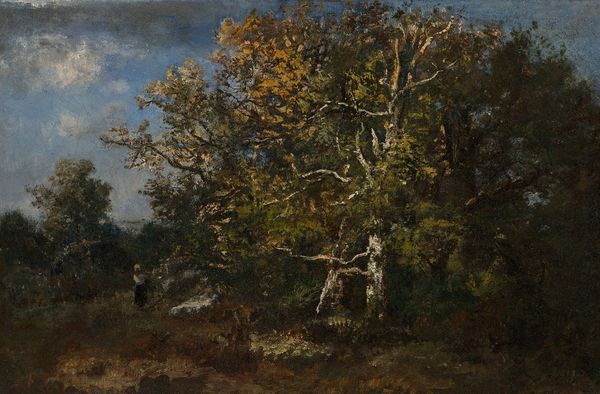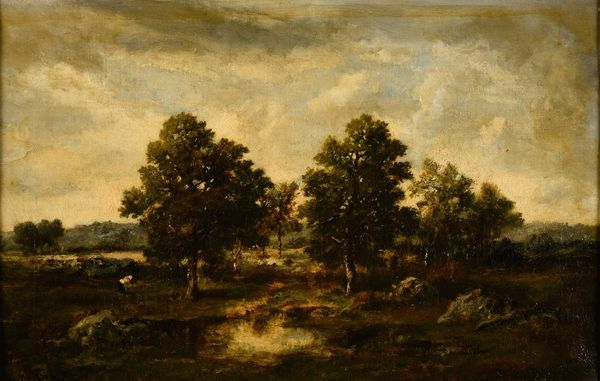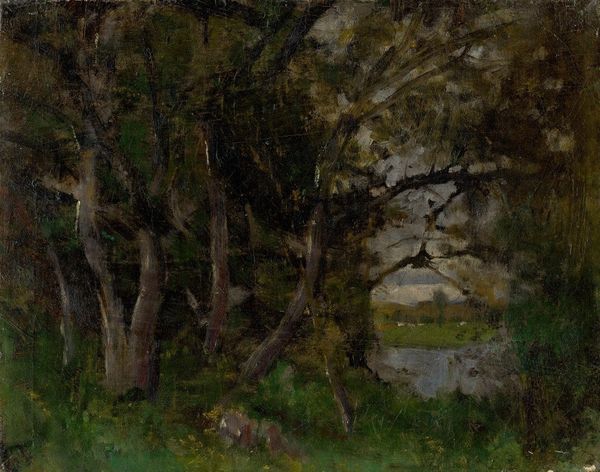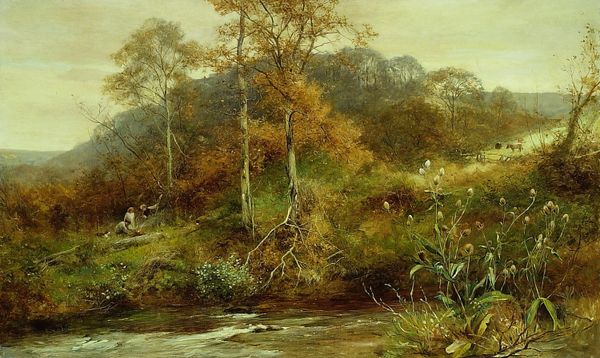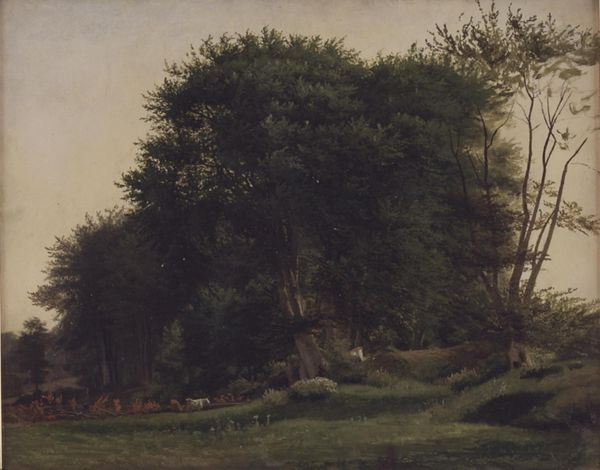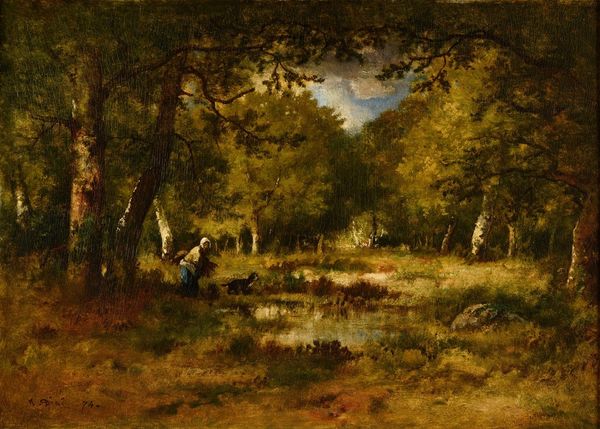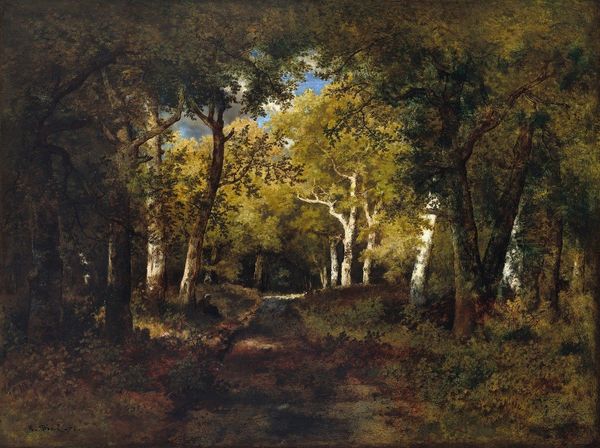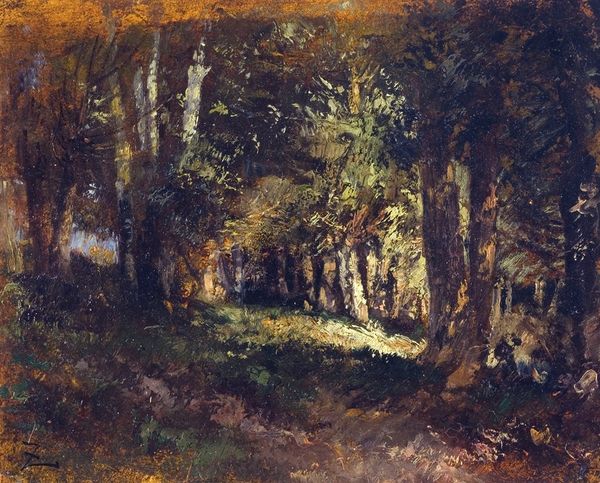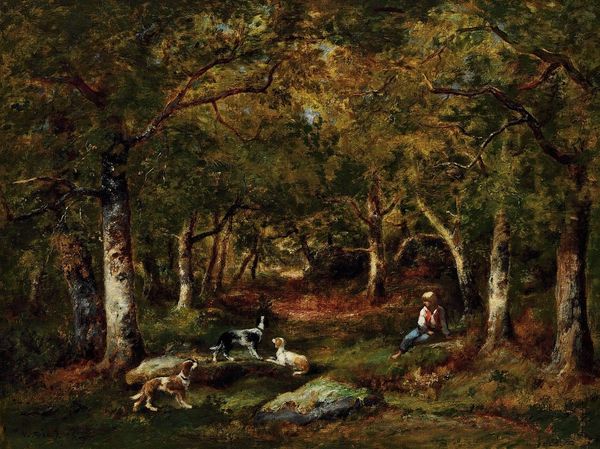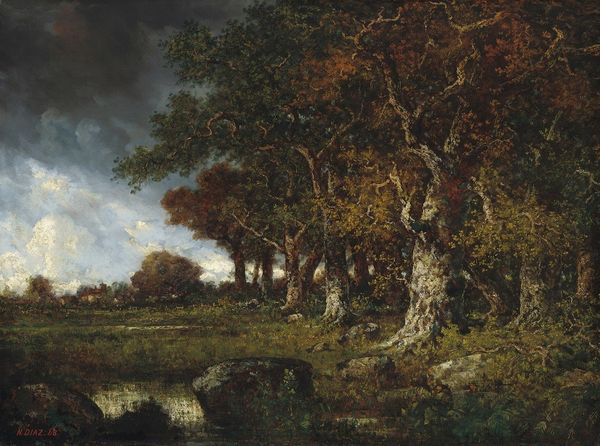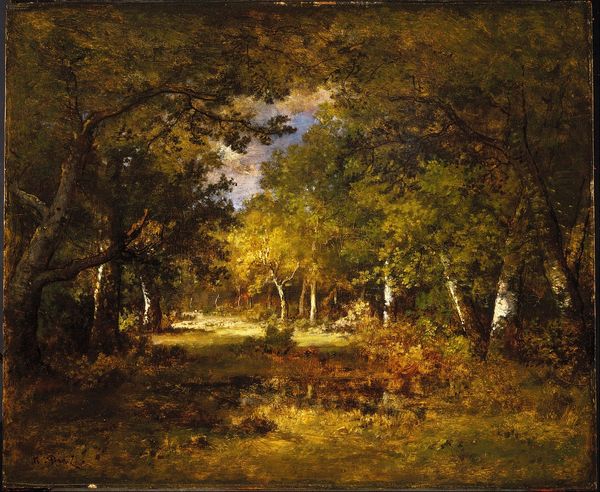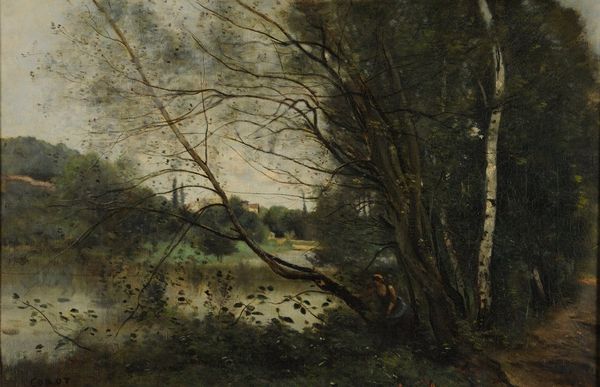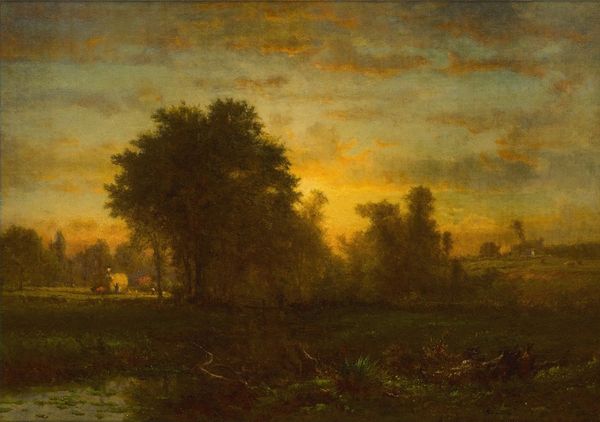
Copyright: Public Domain: Artvee
Curator: Narcisse Virgilio Diaz painted this piece, "Fôret de Fontainebleau," in 1867. As a work made en plein air, it captures a specific forest, but also a larger artistic turn towards naturalism. Editor: The first thing that strikes me is the contrast between the dark foreground and that burst of light further into the forest. It gives the whole composition a wonderful depth. Curator: Diaz's presence in Fontainebleau marks an important shift in art patronage. The area attracted not just the wealthy commissioning portraits, but also bourgeois Parisians seeking leisure, turning these artists into chroniclers of emergent social activities. Editor: Look how Diaz has layered the paint—almost tactile! And his use of color, modulating between shadow and light, isn’t just representational. There’s a clear attempt to capture the fleeting sensory experience of being in the woods. The composition creates an impression rather than a photorealistic scene. Curator: That attention to sensation links Diaz to a Romantic tradition that values feeling above rational thought. The Romantics like Wordsworth and Byron turned to nature as a site of emotional catharsis and creative inspiration, shaping perceptions of the landscape and man's relationship to it. Editor: And even without overt symbolism, the forest takes on a mythical quality here. The density of the foliage, those dappled shadows—they suggest an untamed space, almost primordial. It is very hard to disentangle one form from another. The artist plays here a dance between legibility and formlessness, reflecting on our capability to know our place in nature. Curator: Right. That perceived "untamedness" became quite a selling point in the late 19th century as industrialization marched forward, though for artists and urbanites, the Forest of Fontainebleau offered a welcome respite and alternative setting for creative practice. This canvas helped shape the myth that painting is better outside the rigid halls of official salons. Editor: It seems to argue that real understanding demands an intimate, physical experience. To witness how Diaz manipulated tone, we can see the canvas itself performs a kind of communion with the organic subject matter. I come away seeing landscape painting itself in a new way, feeling renewed awe at the interplay between vision, perception, and brushstroke. Curator: Absolutely. "Fôret de Fontainebleau" captures both a specific locale and an enduring cultural aspiration—an ongoing effort to reconcile ourselves with nature amid accelerating societal change.
Comments
No comments
Be the first to comment and join the conversation on the ultimate creative platform.
